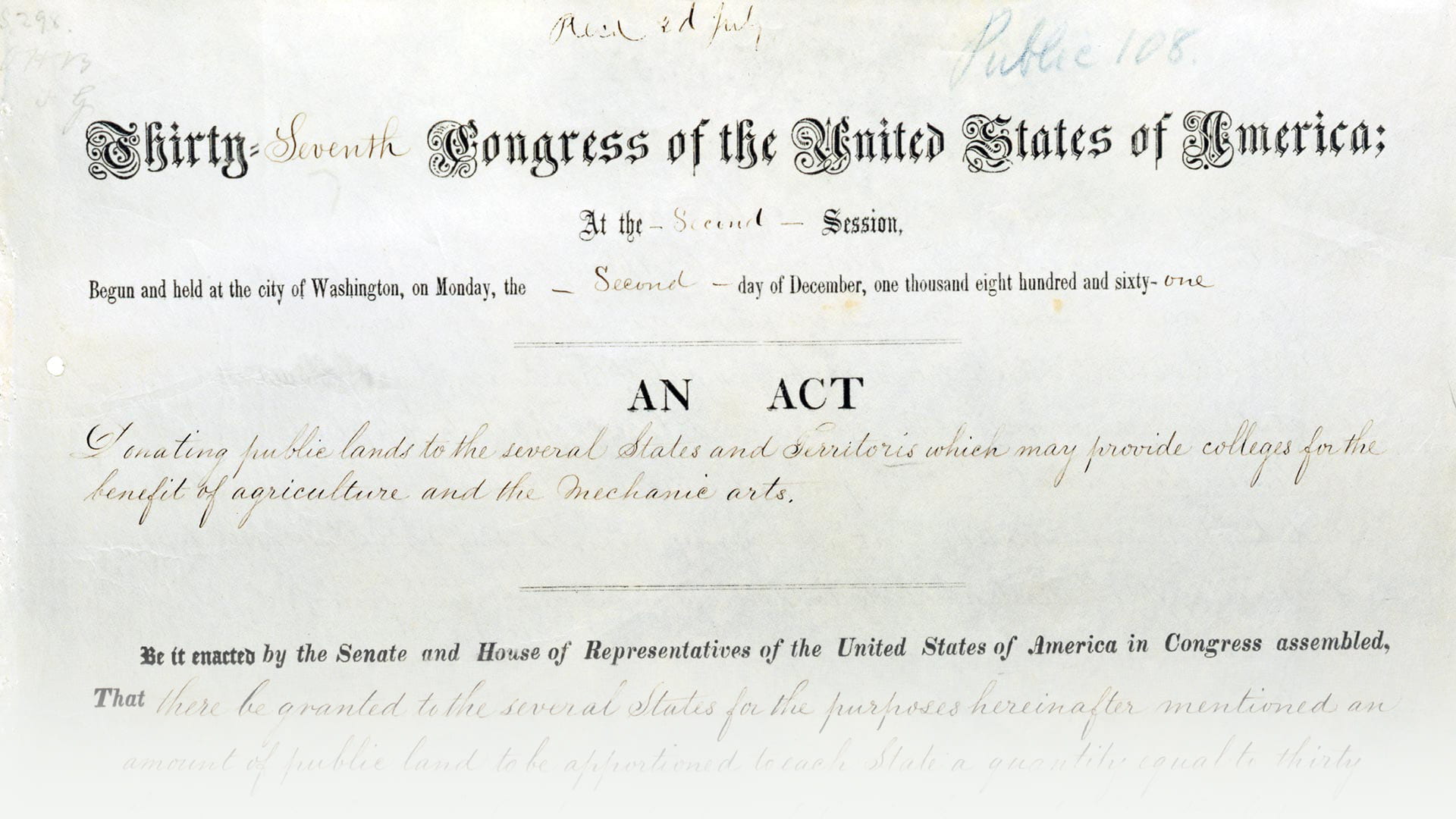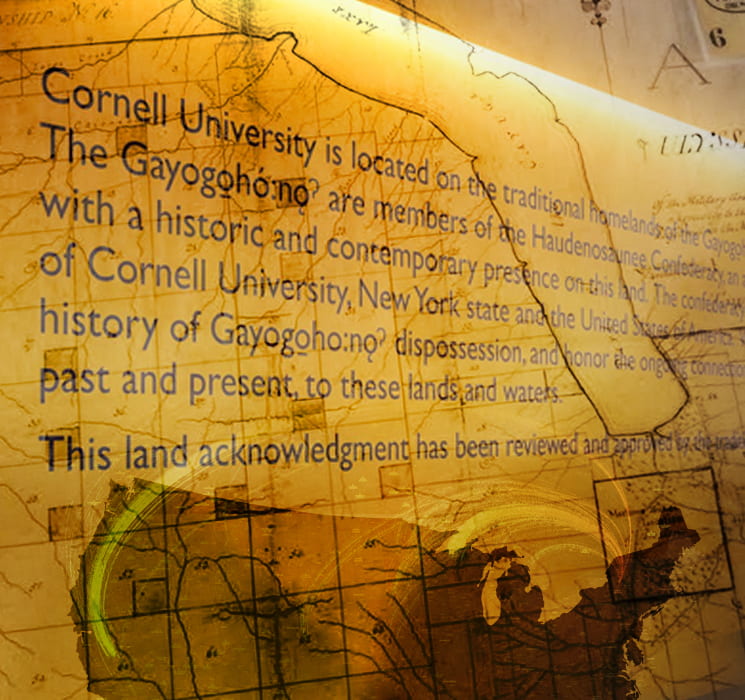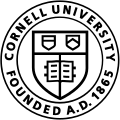
Cornell and the Morrill Act: 120 Years of Land Acquisition

After learning about the dispossession of Native Land during the founding of their institution, students in Professor Kurt Jordan’s AIIS 1100 Indigenous North America class felt it was imperative to discuss the 1862 Morrill Act, which was instrumental in the establishment of public land grant universities. Cornell was one of the largest beneficiaries of this law, whose aim was to help establish public universities by granting states federal land for investment. While the act didn’t specify where this land came from, these were lands seized, expropriated, taken in forced treaties, and dispossessed from Indigenous peoples across the continent.
The release of the 2020 High Country News “Land-Grab Universities” investigation by Robert Lee, et al., revealed Cornell as the number one beneficiary of this act, having received 977,909 acres of land and from there having raised $5,739,657 under Ezra Cornell’s direction, an astounding amount at the time. This digital story, told through interviews with faculty, staff, and students, asks: How has Cornell tackled its complicated history with Indigenous dispossession? Is the Cornell community aware of its “land grab” history? Once you know, what should you do?

Act of July 2, 1862 (Morrill Act), Public Law 37-108, 12 STAT 503, Which Established Land Grant Colleges. https://www.archives.gov/milestone-documents/morrill-act
To learn more about Cornell’s response, explore the Cornell and Indigenous Dispossession Project. Renaming Morrill Hall, mentioned in the video, is a suggestion made by the Science and Technology Studies department (see references for link).

Chapters
0:00-2:27 The Moral Problem with Cornell’s place in the Morrill Act
2:28-6:15 Knowledge about the Morrill Act and its Impact
6:15-8:23 How has Cornell Educated its Students about its History
8:24-15:30 Few Indigenous Students on Stolen Land
15:30-23:11 The Problem with Land Acknowledgements
23:11-27:19 What Can be Done?
25:17
“Non-Indigenous people just need to be curious and questioning when things don’t feel right within that.”
– Ben Maracle


Interviewees
- Ben Maracle (Kanyen´kehá:ka/Mohawk), Graphic/Administrative Assistant, American Indian and Indigenous Studies Program
- Kurt A. Jordan, Associate Professor, Director of American Indian and Indigenous Studies Program
- Kahontineh Swamp (Kanyen´kehá:ka/Mohawk), Akwe:kon Residence Hall Director, American Indian and Indigenous Studies Program
- Luca Chisholm (Little Traverse Bay Band of Odawa and Muskogee Creek), first year student at Cornell
- Zelazzie Zepeda (Yo’eme, Nahua, Purépecha), first year student at Cornell
Acknowledgements
We would like to thank Professor Jordan and Sarah LaVoy for their guidance on this project. We would also like to thank all that agreed to be interviewed for sharing their thoughts and opinions.

Cornell University is located on the traditional homelands of the Gayogo̱hó:nǫɁ (the Cayuga Nation). The Gayogo̱hó:nǫɁ are members of the Haudenosaunee Confederacy, an alliance of six sovereign Nations with a historic and contemporary presence on this land. The Confederacy precedes the establishment of Cornell University, New York state, and the United States of America. We acknowledge the painful history of Gayogo̱hó:nǫɁ dispossession, and honor the ongoing connection of Gayogo̱hó:nǫɁ people, past and present, to these lands and waters.
References
Act of July 2, 1862 (Morrill Act), Public Law 37-108, 12 STAT 503, which established land grant colleges, 07/02/1862; Enrolled Acts and Resolutions of Congress, 1789-1996; Record Group 11; General Records of the United States Government; National Archives. https://catalog.archives.gov/id/299817
American Indian and Indigenous Studies Program. (2023). Cornell University and Indigenous Dispossession Project. https://blogs.cornell.edu/cornelluniversityindigenousdispossession
Jordan, Kurt A. 2022. Indigenous North America. Cornell University, Ithaca, New York, United States.
Kamis, Tamara, Minghan Gao, Xinyu J. Hu, Marisa Cefola, and Jonathan Mong. 2022. “Journalist Tristan Ahtone and Historian Robert Lee Discuss Indigenous Dispossession and Land Grant Universities, Including Cornell.” The Cornell Daily Sun. https://cornellsun.com/2022/09/14/journalist-tristan-ahtone-and-historian-robert-lee-discuss-indigenous-dispossession-and-land-grant-universities-including-cornell.
Lee, Robert, Tristan Ahtone,Margaret Pearce, Kalen Goodluck, Geoff McGhee, Cody Leff, Katherine Lanpher and Taryn Salinas. (2020). Land-Grab Universities. High Country News. Accessed June 7, 2023. https://www.landgrabu.org.
Mansoor, Daniel. n.d. “Ezra Magazine: Morrill Land Grant Act turns 150.” Ezra. Accessed June 7, 2023. https://ezramagazine.cornell.edu/FALL12/CornellHistory.html.
“Morrill Hall and Land Grab Universities | Department of Science & Technology Studies.” n.d. Department of Science & Technology Studies. College of Arts & Sciences. Cornell University. Accessed June 7, 2023. https://sts.cornell.edu/morrill-hall-and-land-grab-universities.
“Watch Keynote: The 2022 Kops Freedom of the Press Lecture | eCornell.” n.d. eCornell. Accessed June 7, 2023. https://ecornell.cornell.edu/keynotes/view/K091322.
